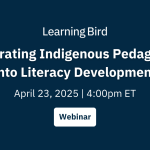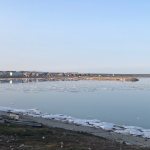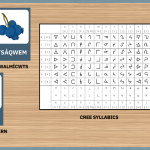From Vision to Action: A Practical Approach to Community Language Planning
Language is more than words. It also carries culture, worldview, and relationships with land and community. For Indigenous Peoples, reclaiming and revitalizing language is a powerful act of self-determination and decolonization.
Language is Power – our people must recover ways of knowing and relating from outside the mental and ideational framework of colonialism by regenerating themselves in a conceptual universe formed through Indigenous languages.
— Alfred and Corntassel (2005)
Creating a community language plan is an important step in language reclamation. It helps communities reflect on their shared vision for their language, prioritize where to focus their energy, and create a realistic path forward. These plans are powerful tools that support long-term revitalization efforts, whether you’re just starting out or building on decades of work.
In our recent webinar on Creating Your Community Language Plan, we explored key stages in the planning process. This post offers a short summary of those ideas, along with links to helpful tools and resources.
Part 1 – Laying the Foundation: Preparing for Your Language Plan
Before setting goals or choosing strategies, it’s essential to take time to prepare. That preparation builds the foundation for a plan that reflects community priorities and has the support it needs to succeed.
Build Your Team
Language transmission is inherently intergenerational. It depends on relationships between fluent speakers and new learners—among Elders, youth, families, educators, and leaders. For this reason, it’s essential to bring together a cross-section of the community when forming your language-planning team.
Communities often designate a project coordinator to lead the process. Still, it’s equally important to have a small team of people who guide the work, validate ideas, and ensure the plan reflects collective goals.
| Tip: |
Assign someone to record decisions and community feedback. This will make it easier to revisit conversations and build continuity across meetings. |
Include a Communication Strategy
Opportunities for community engagement and clear, transparent communication about how the project is progressing are some of the most critical elements of any successful community project. Surveys and community-wide participation are necessary for success. However, one typical frustration language workers share is that “surveys don’t work.” This lack of participation often comes from communities failing to follow up with results or next steps after asking for input and guidance.
Building a communications plan into your community language plan will help build trust and participation. The process feels more open and transparent if you are clear about the work and deliver on your promises to share project outputs and results in a timely way. This clarity will help build confidence amongst participants. Planning processes become stronger when the goals, process, and timelines are shared early enough for people to see and understand how their voices will shape the work.
| Tip: | Create a plan for the most effective way to provide short updates throughout the project. Build specific reports and summaries into your project deliverables. Celebrate small wins and let people know how the plan is evolving. |
Understand Your Starting Point: Language Status & Resources
One of the first steps in planning is understanding the current state of your language. This includes knowing or gathering information about:
- The number of speakers in your community, approximate fluency levels, and the ages of fluent and semi-fluent speakers
- Where and how the language is being used (at home, in schools, at events, etc.)
- Existing programs (classes, camps, language nests, immersion, mentor-apprentice programs, etc.)
- Existing resources (recordings, storybooks, apps, teaching materials, etc.), resource gaps, and needed updates
| Tip: |
Use a mix of engagement tools—surveys, interviews, social media, and community meetings—to ensure people can share their input in a way that feels comfortable to them. |
Understand Your Language Landscape
In addition to assessing your language’s status and available resources, it’s essential to understand the values, attitudes, and beliefs that shape how people see and engage with the language. The First People’s Cultural Council (FPCC) refers to these ideas as your community’s language landscape.
Language use doesn’t exist in a vacuum. It’s influenced by complex histories, including policies and practices that discouraged or punished the use of Indigenous languages. This legacy has shaped how different generations perceive language, and those perceptions impact revitalization efforts today.
Language planning “requires an open, honest assessment of the state of the language and how people feel about using and preserving it… Personal and community attitudes are as important as — if not more important than—the technical aspects.”
—Dauenhauer and Dauenhauer 1998
Understanding your community’s language landscape can help answer questions like:
- Do people feel a strong emotional or cultural connection to the language?
- Are some dialects viewed as “more correct” than others?
- Is there stigma or shame attached to speaking the language?
- How do younger generations view the language—do they see it as relevant, empowering, or difficult to access?
Gathering these insights helps inform your approach and identify potential barriers or strengths that may not be visible through surveys alone.
As FPCC explains, “acknowledging your community’s unique language landscape is an essential part of building a language plan.” It means understanding how people feel about the language, and how those feelings influence use, learning, and transmission.
| Tip: |
When engaging with your community, include open-ended questions that explore how people feel about the language and what they believe its future could look like. This qualitative insight is just as important as speaker counts and program lists. |
Assess Capacity Honestly
Successful plans are built on realistic expectations. That means looking closely at the time, skills, and tools your team has access to. Many communities have just a few fluent or semi-fluent speakers, who are often asked to take on multiple roles or tasks. When it comes time to develop your goals and plan, it’s crucial to align these goals to your community’s actual capacity.
When assessing your capacity, assess the knowledge and materials you have, and ask yourself:
- Do we have the ability to gather language resources from multiple sources and digitize analog materials for wider use?
- Do we have enough fluent speakers or translators to support the work ahead, including reviewing and creating new content?
- Can we access the equipment and technology needed to record, edit, and store audio/video materials?
- Do our fluent speakers have the time, the desire, and the bandwidth to do this work without becoming overwhelmed?
| Tip: |
Scale your goals to match existing capacity, or phase them in over time to ensure long-term momentum and success. |
Part 2 – Setting the Direction: Goals and Strategies
At the heart of every language plan are 2 key elements: goals and strategies.
Setting Your Goals
Goals describe the big-picture outcomes your community wants to achieve. These are tied to your vision and values—what you hope the future of your language will look like in your community. For example:
- Children are learning and speaking the language at home.
- Fluent speakers are mentoring a new generation of learners.
- The language is visible and heard in everyday community life.
| Tip: |
Ask, “If our language plan is successful, what will look and feel different in 5 years?” |
Aim to set 3–5 clear goals. Once you’ve established your goals, you can sort them into short, medium, and long-term categories based on your priorities and capacity.
Identify Your Strategies
Strategies describe the specific actions you’ll take to reach your goals. These should be actionable, measurable, and aligned with your capacity. For example:
Goal: Semi-fluent speakers have become functionally fluent.
Strategies:
- Launch a mentor-apprentice program and add new pairs annually.
- Develop an in-person and online resource library.
- Support mentor-apprentice graduates with formal educator training opportunities.
| Tip: |
Use action words like “start,” “develop,” “create,” and “expand” to keep strategies focused and tangible. |
Tracking Your Progress: Monitoring and Evaluation
Your language plan should include ways of measuring your progress. This might mean tracking
- the number of new learners,
- the rates of language use in homes or schools,
- the completion of key projects or milestones.
| Tip: |
Ask, “What metrics will show us we’re on the right track?” and decide in advance how often you’ll review these metrics and share updates with the community. |
Additional Resources
There are many different summary reports and support tools that can help you throughout your planning process. Here are a few we want to highlight:
1. Language Revitalization Planning Toolkit and Language Planning Templates from the First Peoples Cultural Council (FPCC)
The Language Revitalization Toolkit is an incredible resource that offers instructions, examples, and templates for a community-based planning process. FPCC breaks down language revitalization planning into 4 parts and provides practical templates and examples you can use in your community planning.
2. Towards Indigenous Language Revitalization: An Informative Resource from the Supporting Indigenous Languages Revitalization (SILR) initiative
This resource offers a clear and accessible overview of key terms, concepts, and approaches related to community-led language revitalization. It outlines the different stages of revitalization, highlights community-driven strategies, and provides guidance for developing language plans and programs rooted in Indigenous knowledge systems.
3. Resources for Language Policies and Planning from the Assembly of First Nations
This document is a curated list of funding sources, programs, tools, and organizations that support First Nations language revitalization efforts. It is designed to help communities access practical resources and build capacity for language teaching, documentation, and planning.
Funding
While many communities are moving towards resource development and long-term language planning, one of the major barriers to starting and finishing large-scale projects is funding. There are a number of funding options available for community language plan development. One of the best funding sources for community language plans is Heritage Canada’s Indigenous Languages Component (ILC) program. This federal grant focuses on supporting First Nations communities and First Nations-led organizations to reclaim, revitalize, strengthen, and maintain their languages.
Application Process
How you apply and access this funding will depend on your province or territory. British Columbia, Ontario, Nova Scotia, and Quebec have regional funding partner organizations that distribute funds from the ILC program. If you reside in one of those provinces, you must apply to the regional funding program. Applicants located in the Yukon access this funding through their First Nations government. If you live in any of the other provinces or territories, you’ll apply directly to Heritage Canada. It’s important to know this because the regional organizations and Heritage Canada often have different application windows. See the chart below for more information.
If you’re applying to Heritage Canada, submissions typically open between December and February. Now is a great time to start thinking of your vision and estimating the scope and budget for this work.
| Province/Territory | Funding Organization | Typical Application Window |
| British Columbia | First Peoples’ Cultural Council (FPCC) | June/July |
| Nova Scotia | Mi’kmaw Kina’matnewey (MK) | January |
| Ontario | First Nations Confederacy of Cultural Education Centres (FNCCEC) | February–March |
| Quebec | Regional Committee on First Nations Languages (RCFNL)
Cree Nations should contact their Nation Government |
October |
| Yukon | Contact your First Nations Government | |
| All other provinces and territories | Heritage Canada | December–February |
The Importance of a Language Plan
There is no better time than now to start taking the first steps towards creating your community’s language plan. Increasingly, Heritage Canada and its regional partner organizations are making community language plans a requirement to access both long-term funding and resource development funding. This means that without a language plan, your community won’t be able to apply to the ILC to fund projects that involve creating language learning materials, recording Elders and Knowledge Keepers speaking the language, or language and culture curricula.
How We Can Help
We can help you develop a language plan that reflects your goals, values, and strengths. Whether you’re creating a plan for the first time or refreshing an existing one, our team can help you document your vision, align your strategies, and support your language journey in a community-led and relationship-based way.
Reach out to us if you’d like to learn more.
Sources
Alfred, T., & Corntassel, J. (2005). Being Indigenous: Resurgences against contemporary colonialism. Government and Opposition, 40(4), 597–614.
“Âsônamâkêwin ~ Passing It On” by Hal Cameron (mixed media, 2018) is licensed under CC BY 2.0.
Dauenhauer, N. M., & Dauenhauer, R. (1998). Technical, emotional, and ideological issues in reversing language shift: examples from Southeast Alaska. In L. A. Grenoble & L. J. Whaley (Eds.), Endangered Languages: Language Loss and Community Response (pp. 57–98). Cambridge University Press.








